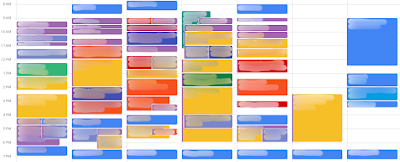Revisit: How I organize the teaching staff of my 200+ student class
When it comes to anyone’s advice on how to run your own course, your “mileage may vary.” So, I thought it would be interesting to revisit my series on how I organize my teaching staff in my 200+ student class . The first post of that series is my most viewed post on Medium. I published that series during the second half of 2020, and times have changed since then (**cough** pandemic **cough**). In addition, I’ve moved on from that introductory computer science (CS1), and I primarily teach an elective data science (DS) course, which has a high variability in enrollment. In this post, I revisit that series from the perspective of what I still do versus do not between my CS1 and DS courses. [ Also posted on medium. ] Current Course’s Context Before I start my comparison, I need to go over how the context is different since it influenced many of the differences between the two courses. My DS class has a semester-long project and no labs/discussions. The class also uses Python, which is wha
